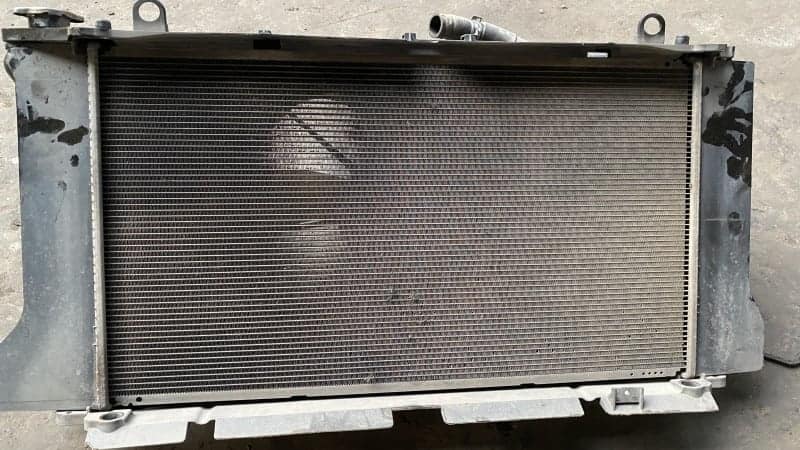Can you describe a time when your engine severely overheated? This may be the result of a number of issues with the engine, such as a blocked radiator or a burst head gasket. Inadequate or expired radiator antifreeze, or a cooling system that hasn’t been maintained in a while, are common causes of a clogged radiator.
Instructions on how to flush a blocked radiator
When you take your automobile in for repair, be sure to flush the radiator. Your engine’s radiator aids in cooling it. Therefore, you must flush it according to the manufacturer’s instructions. It is recommended that you flush the radiator before you observe any signs of a partially or fully blocked radiator.

The following items are required to manually flush a blocked radiator:
- To flush the radiator chemically, use distilled water.
- Pan de panne
- Antifreeze/Coolant Funnel
- Surgical gloves and a toolbox for mechanics. A few standard hand tools will be required.
Step 1. Park your car and allow it to cool down:
Always ensure that your cooling system is not hot before handling it in any manner, including opening the radiator cap, the radiator petcock, or any water hose. To avoid burns, always check that the system is at a cool temperature.
You might not find a coolant reservoir tank or radiator cap on some vehicles. No matter what I say about the radiator cap, you can always use the reservoir tank to accomplish it. Before you flush your clogged radiator, it’s a good idea to pour a liter of chemical flush into it and let it run for a few days.
Step 2. Empty your coolant:
It seems like you need to drain the coolant. Under your vehicle, slide your catch pan. Be careful it doesn’t stray from its designated spot beneath the radiator petcock. To let the old coolant flow through it, remove the petcock. The petcock is often located around the bottom of the radiator, on either the right or left side.
In the absence of a petcock, you can facilitate the flushing of coolant by removing the clamps from the radiator hose using pliers. An old method I picked up is to remove the radiator cap and see whether the coolant flows faster through the petcock. The radiator drain petcock must be locked once all of the coolant has been drained.
Step3. Refill your radiator with distilled water:
Before flushing the radiator, it’s best to fill it with distilled water and use the best chemical for the job. You can secure your radiator cap by twisting it. An engine might potentially overheat due to a damaged radiator cap, so be careful not to harm it. For the chemical flush to dissolve the clogged pollutants in the system, drive your automobile for around 15 minutes.
Step 4. Drain out the coolant:
Pour the coolant out of the car by sliding the catch pan below it. While the radiator is dripping, the coolant reservoir tank will remain intact. Coolant is located in the reservoir, as may be seen by opening the cover. The pipe that goes from the radiator cap to the coolant reservoir needs to be removed. Curl the hose so it touches the floor. Make sure it’s pointing straight at the catch pan to avoid dropping coolant.
Get the coolant to start draining to the floor in whatever way you can. It is important to recycle all of the antifreeze that has been flushed. Animals cannot tolerate this fluid. It has a delicious flavor, but your dog or cat will perish if they drink it. Keep doing this until the water draining from the radiator is clear.
Step 5. Flush the outside fins and pipes with a steam machine:
You should clear the obstruction from the outer radiator fins if possible. The best way to remove the buildup of debris and sediments from your radiator fins is to remove the radiator coat or radiator fan, whichever is applicable to your vehicle. Put everything you remove back into place and go on to the next stage.
Step 6. Pour your antifreeze:
After you check that the outside radiator fins are not obstructed and see clear water draining from the radiator, the next step is to pour in the antifreeze. I think a 50/50 antifreeze would work best. Just pour the antifreeze; water isn’t necessary. You should consult your owner’s manual to see whether antifreeze is appropriate for your vehicle before adding any.
If your radiator has any holes in it, you must fill them with sealing agents. After that, you need to drive your vehicle for around ten minutes. Unleash the power of your heat to its maximum. Clogged heater cores are the culprits when you can’t feel any heat emanating from them. Therefore, you must clear it. Here is a step-by-step approach to clearing the radiator.

Conclusion
This post has provided a thorough explanation of how to flush a radiator that is clogged, in my opinion. So, the next time you encounter symptoms of a blocked heater core or radiator, you won’t need to call a professional repair to clear it out.




